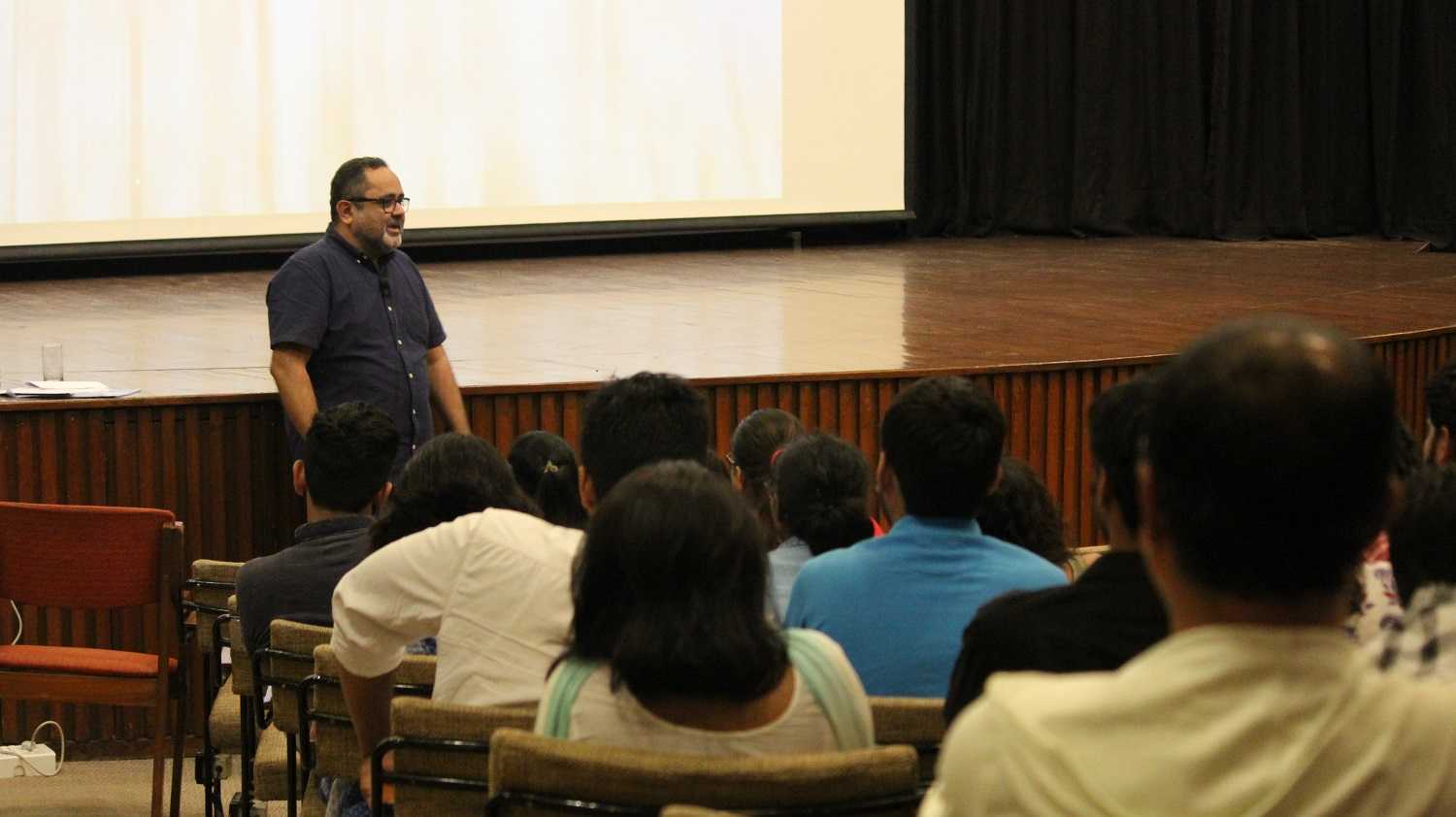The filmmaker and cinematographer conducted a masterclass titled 'The Great and Small Expectations' at the ongoing documentary film festival.
Avijit Mukul Kishore delves into documentary and its changing aesthetics at Open Frame Film Festival
New Delhi - 14 Sep 2018 19:00 IST


Abhija Ghosh
At the 18th PSBT Open Frame Film Festival, filmmaker and cinematographer, Avijit Mukul Kishore, conducted a masterclass titled 'The Great and Small Expectations' on documentary film practices and its changing aesthetics with technology.
In the two-part session, Kishore illustrated the concerns and issues around the documentary form; its methods of narration and strategies of framing the subject, especially in relation to evolving camera technologies and film formats. Using various examples from fiction and non-fiction films, the masterclass explored the idea of what it really is to be a citizen, whether framed inside a film or outside of it.
Throughout the interactive lecture, with a crowd comprising mostly of students, the comparisons and conversations between documentary, experimental and mainstream film images, aesthetics, modes of narration, choices of subjects and, the craft of it all remained the central theme.
Kishore highlighted the shifts in various documentary filmmaking technologies and formats that altered the way the form was viewed in until the 1980s. From the discontinuation of the 35mm film format for non-fiction filmmaking, which was the dominant mode of state produced documentary films in India, to the entry of the digital video (DV) with the Sony Mini DV camera range, to the present DSLR technologies, Kishore mapped the arc of shifting independent film practices in India and how much of their aesthetics and cultural politics has depended on the transforming camera technologies.
Drawing examples from fictional films such as Lars von Trier’s Dancer In The Dark (2000) which used multiple DV camera setup to film a narrative, giving it the aesthetic quality of the hand-held industrial video or “accidental image” and the case of contrived found footage in the Blair Witch Project, Kishore demonstrated how these mainstream interventions affected the aesthetics of documentary filmmaking in general, but more precisely the “look” of the non-fiction film. The pertinent question looming large during the discussion with participants on this comparison was on the ethics of presenting fictional films through realist modes of the documentary and promoting constructed found footage as the real.
For the second half of the masterclass, Kishore turned from the elements of recording and memory in film practices to the specific question of the citizen/subject which he illustrated through the representation of the queer subject.
Revisiting the 1970s phase of experimental film production in Films Division, which shifted the practice of documentary filmmaking in the country from the didactic conventions to one oriented towards critique and dissent, Kishore explained how filmmakers such as Sukhdev, Pramod Pati and SNS Sastry, even while making documentaries within the production boundaries of state propaganda, managed to bring in unique perspectives on public ideas of the youth, freedom, morality and sexuality.
Taking the instance of SNS Sastry’s film This Bit Of That India (1972), ostensibly made for promoting the facilities available for foreign students at public universities in India, Kishore elaborated how the abstract juxtaposition of images, intercutting between themes and allegories for sexuality, morality and chastity, not only pushed the boundaries of the documentary eye on the state’s subject, but also effectively stood as a metaphor for the then 25-year -old nation attempting to embrace adulthood. This 'queer' language of filmmaking was a definitive moment in non-fiction representation of the nation.
Making this session even more interesting and thought provoking for the audience, Kishore ended the masterclass with a glance at queer representation in popular film culture. Surprising the participants with an excerpt from Karan Johar’s film Student Of The Year (2012), and also keeping the idea of the student/subject common with the Films Division film, Kishore demonstrated how mainstream films have begun to provide interventions for the cinematic queer subject, especially through popular modes of dialogue and subject/filmmaker/audience identification.
While acknowledging that queer representations are mostly relayed through a set of archetypes, denying such figures any heterogeneity or agency, he listed both documentary and mainstream visual strategies have ended up perpetuating these types. However, the popular film is still able to provide a larger impact because of its reach and deep circulation in public culture, and therein lies the cinematic possibilities for ruptures, only if one wishes to.
The masterclass was held on 12 September 2018 at the India International Centre in New Delhi as part of the Open Frame Film Festival.
Related topics
Open Frame Film Festival

